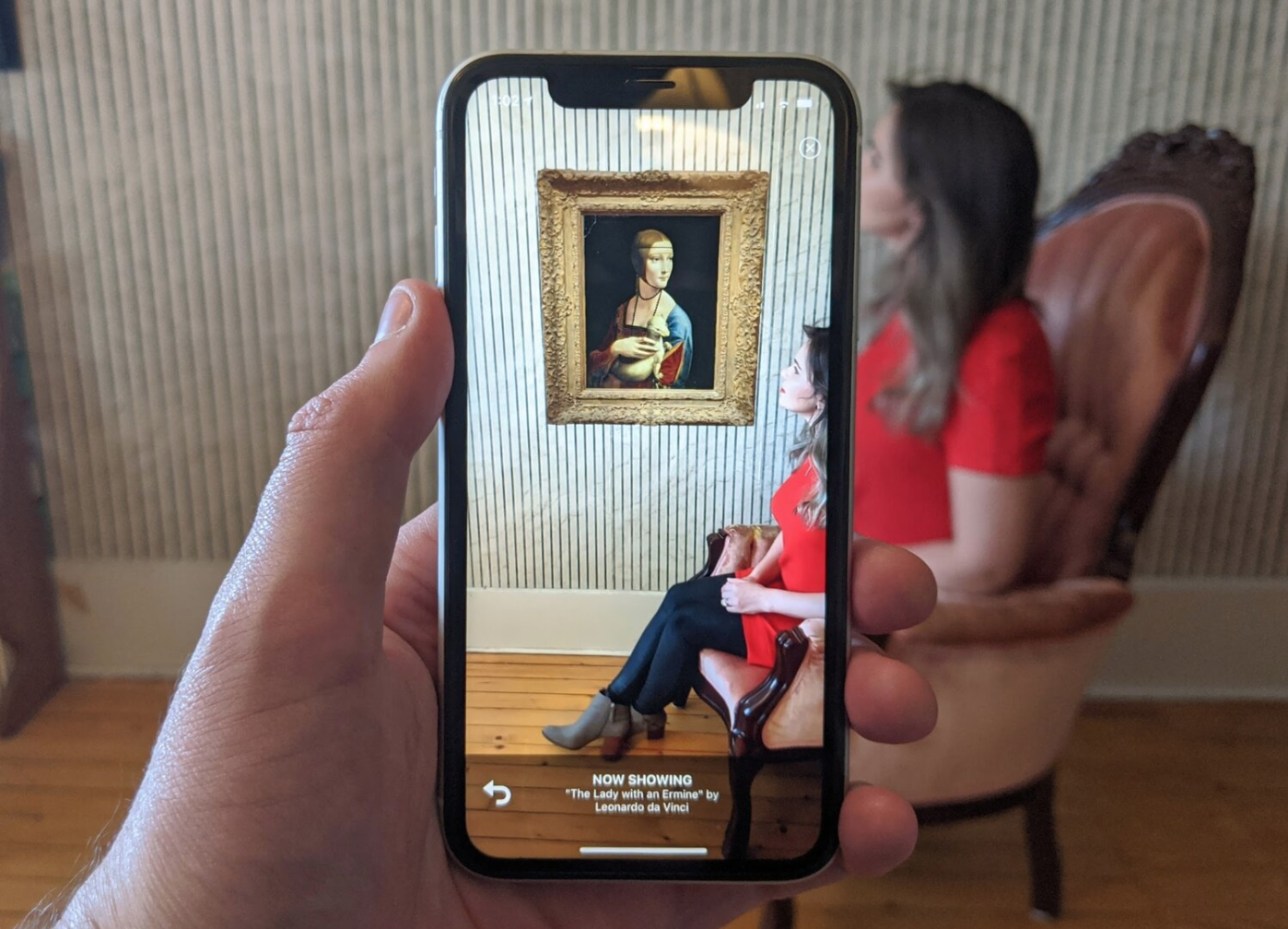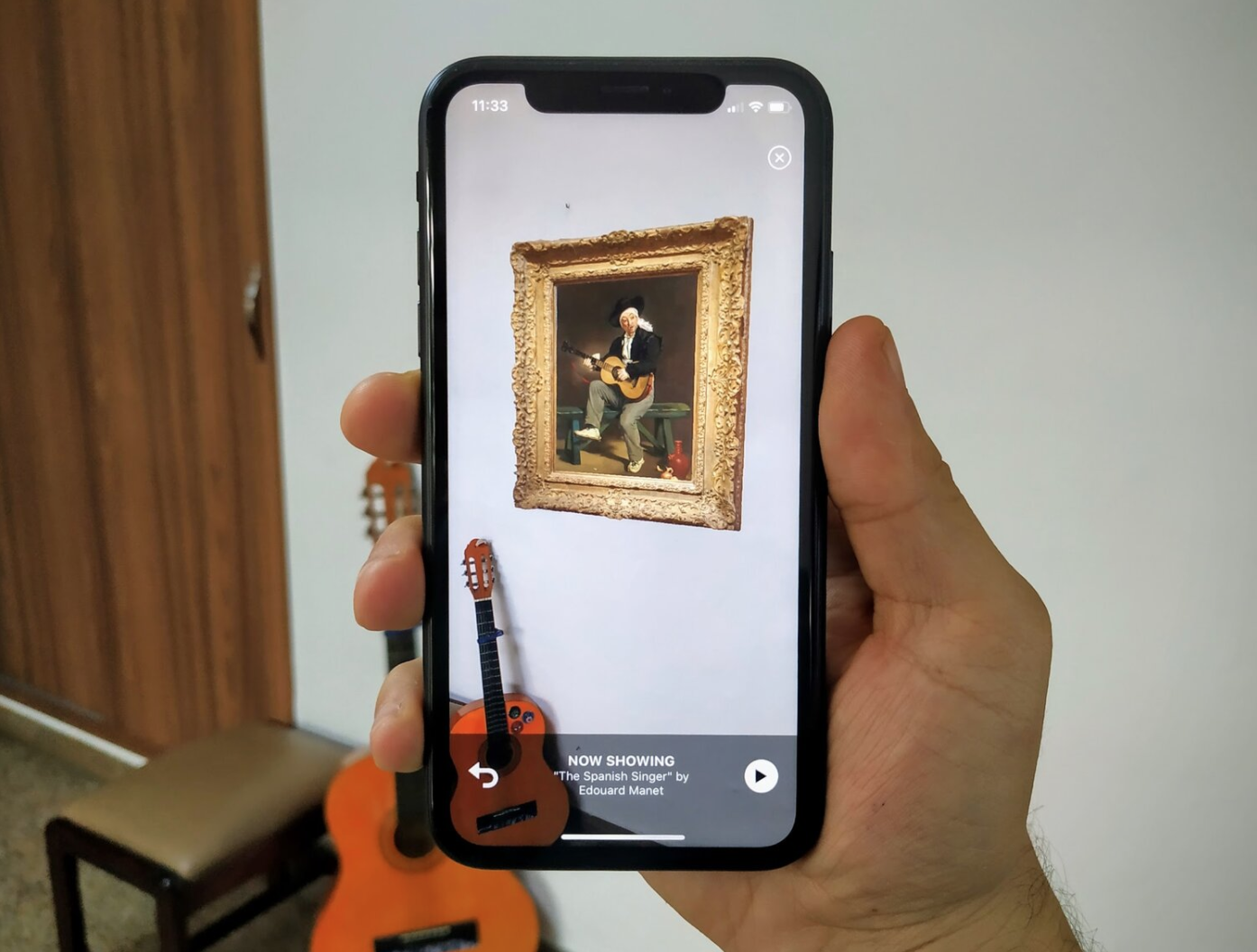I've been lucky in that the COVID crisis has so far left my family and me unscathed. It did, however, make me realize I have two major addictions: art museums and Starbucks. Luckily, my neighborhood Starbucks just reopened, and my good friend Brendan Ciecko and his team at Cuseum are trying to give me my museums back, but with a twist.
Cuseum has announced the launch of a new app enabling art lovers to view works from their favorite museums on the walls of their homes using AR (augmented reality). I know what you are thinking: “It's just not the same as going to a real museum.”
But new research by MIT professor Dr. Pawan Sinha indicates otherwise. Dr. Sinha's paper titled "Neurological Perceptions of Art through Augmented & Virtual Reality," published by Cuseum, suggests that "the human brain doesn't differentiate between digitally reproduced artworks and their originals." This immediately felt wrong to me, so I decided to read the paper to see if I could better understand the findings from their research.
According to the paper, their experiment included nine test participants. The participants were screened to find subjects with little to no background in art who had limited exposure to AR/VR (augmented reality/virtual reality). All testing was conducted at the Museum of Fine Arts in Boston, Massachusetts (my go-to museum). Participants were shown artworks through four different environments:
Augmented reality (AR)
Virtual reality (VR)
Two-dimensional photographic reproduction
Authentic original
Additionally, the participants were tested while staring at a blank wall of the museum to establish a baseline phase.
The paper explains that the test uses EEG (electroencephalography) to evaluate the electrical activity in the brains of participants in an attempt at "measuring non-conscious engagement." You have likely seen images of people with electrodes on their scalp and a whole bunch of wires coming off of their heads on TV or in movies. EEG devices have come a long way in the last few years, and for this study, the team used a commercial EEG, the Muse 2 headset (which retails for less than $300).
Muse 2 Headset
The four electrodes on the Muse 2 headset make contact with a test participant’s scalp and record and analyze electrical impulses from their brain, sending signals back for further analysis. In this case, the EEG was used to try and detect "relaxation" and "concentration." As described in the paper:
Together, alpha's indication of subdued relaxation in direct contrast to gamma's indication of high concentration, tell a well-rounded story of a participant’s experience in all four of the experimental environments.
After performing analysis, Sinha and team conclude in the paper that:
Our current EEG findings would suggest that aesthetic experience is not denigrated by a digital interface representation and, in fact, digital reproductions in the case of augmented reality are shown to improve the magnitude of brain activity compared to the viewing of original works of art.
Photo courtesy of Cuseum
In addition to the EEG testing, participants underwent qualitative testing. Between each testing phase, participants were asked to provide as many details as they could remember about the painting they had just seen in order to test their memory. They were also questioned again a week later to test their longer-term memory. The survey results showed that participants found the images from augmented reality to be the most memorable after a week’s time.
While interesting, the study raises more questions for me than it answers. For starters, I don't sit perfectly still when looking at art in a museum. I love to walk around, shifting from side to side, to see how paintings change. I enjoy exploring the dimensionality of the brushstrokes while zooming in and out of the canvas. In the conclusion of the paper, Dr. Sinha acknowledges, "Movement would create a stronger facsimile of a true museum experience…" and could be included in future testing.
I also wonder if the test results would have skewed towards a greater appreciation for the original paintings if, instead of screening for a lack of art experience, they instead screened to optimize for expertise in art. As an art historian, knowing I am standing in front of the same canvas labored upon by the artist is very meaningful to me and adds to the experience. For example, I grew up only seeing Rothko paintings reproduced in books. I thought his work was stupid and assumed people only claimed to like it due to peer pressure. Then I saw a great number of his paintings in person at a retrospective, and I had the closest thing I’ve ever had to a religious experience. Being enveloped by those giant canvases one after the other was life changing -- an experience I refuse to believe could be reproduced on a tablet using AR and an experience that I know firsthand was not able to be reproduced in printed books.
As an artist, I know that we take great care in managing how and where people view the work we create down to the tiniest decisions over materials choices. We lose sleep over details like surface texture and lighting.
As a curator, I have had hours-long conversations about what kind of tablet or screen an artist is willing to use, because even the smallest details alter the experience for the viewer. Every artist I’ve ever worked with would tell you they care deeply about whether their work is shown on canvas, a digital screen, or displayed using VR or AR.
Photo courtesy of Cuseum
When I first discovered Starbucks was going to shut down for COVID, I bought a half-dozen bags of their beans, a grinder, and a French press to make coffee for myself at home. While the coffee tasted similar, it was immediately obvious that something important was missing. I'm not sure if it was the pilgrimage, the friendly baristas, or that their beans are optimized for their brewing equipment, but it was not the same. I still drank the coffee at home because it was the best I could get. Likewise, I truly respect and value the work that Brendan, Cuseum, and Dr. Sinha are doing to give us the best possible art experience at home. Their work is noble, meaningful, and valuable -- but I'm far from convinced that my brain "doesn't differentiate between digitally reproduced artworks and their originals."
If quarantine has taught me anything, it is just how much I miss museums and seeing paintings and sculptures in person. I'll be running to the museums to get my fix as soon as they are back open. Given Brendan’s life’s work at Cuseum is admirably to help museums drive visitor, member, and donor engagement, I won’t be surprised if I bump into him admiring a thickly impastoed van Gogh or Monet during my visit. First cup of coffee is on me as thanks for the valuable research he is supporting, even if I still believe we have a long, long way to go. Hopefully there is a Starbucks nearby.




